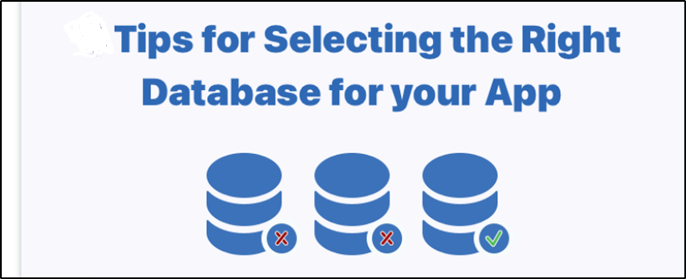
Selecting the right database for your needs depends on various factors, including the nature of your data, the scale of your application, performance requirements, scalability, budget, and specific features you require. Here are some steps to help you in the process:
- Identify your requirements: Start by understanding your data and application requirements. Consider the volume, velocity, variety, and veracity of your data. Determine if you need a relational database, a NoSQL database, a graph database, or a specialized database for your use case.
- Consider data structure: Assess the structure of your data. If you have highly structured data with well-defined relationships, a relational database management system (RDBMS) like MySQL, PostgreSQL, or Oracle may be suitable. For unstructured or semi-structured data, NoSQL databases like MongoDB, Cassandra, or Elasticsearch might be a better fit.
- Evaluate scalability needs: Determine if your application requires horizontal scalability (scaling out across multiple servers) or vertical scalability (scaling up by upgrading hardware). Some databases are better suited for horizontal scalability, while others excel at vertical scalability.
- Performance requirements: Evaluate the performance characteristics you need from your database. Consider factors such as read vs. write performance, latency, throughput, and caching capabilities. Different databases have varying strengths and weaknesses in these areas.
- Consider the ecosystem and community support: Assess the availability of tools, libraries, frameworks, and community support for the database you are considering. A strong ecosystem can provide valuable resources and help you address challenges more effectively.
- Security and compliance: If your application deals with sensitive data or has specific compliance requirements (e.g., HIPAA, GDPR), ensure that the database you choose provides the necessary security features and meets the relevant compliance standards.
- Cost considerations: Consider your budget and the total cost of ownership (TCO) for the database. Evaluate factors such as licensing costs, hardware requirements, maintenance, and operational overhead.
- Future requirements: Anticipate your future needs and growth. Will your database need to handle increased data volumes, users, or new features? Consider the scalability and flexibility of the database to accommodate future requirements.
- Perform proof-of-concept (POC) or benchmarking: Once you have a shortlist of databases, conduct POCs or benchmarks to evaluate their performance, functionality, ease of use, and suitability for your specific use case. This can help you make an informed decision based on real-world scenarios.
- Seek expert advice if needed: If you’re unsure or need assistance, consider consulting with database experts or specialists who can provide guidance based on their experience and knowledge.
Remember that there is no one-size-fits-all solution, and the “right” database ultimately depends on your unique requirements and constraints. It’s important to carefully evaluate your needs and consider trade-offs before making a decision.
